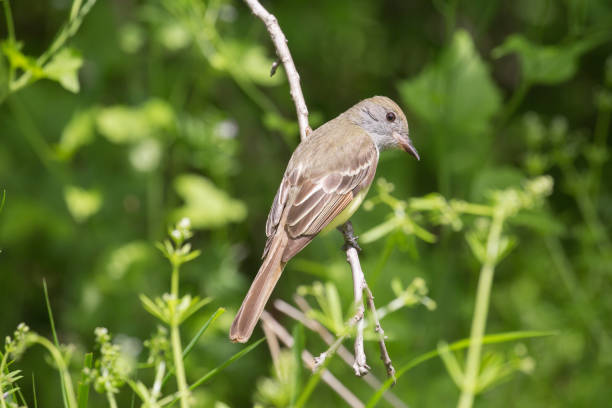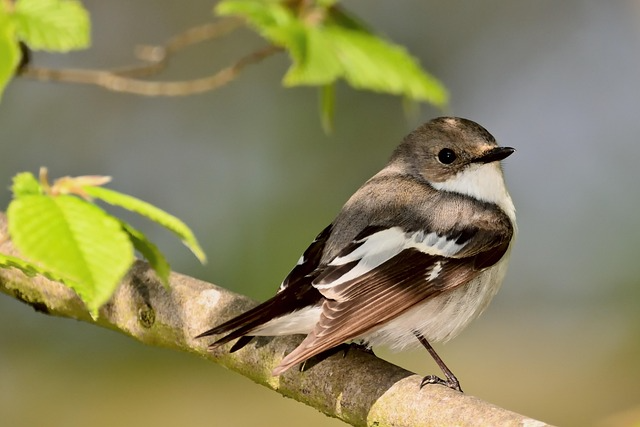Table of Contents
Scientific Classification
| Kingdom | Animalia |
| Phylum | Chordata |
| Class | Aves |
| Order | Passeriformes |
| Family | Tyrannidae |
| Genus | Empidonax |
| Species | Empidonax virescens |
| Scientific Name | Empidonax virescens |
Description
The Acadian Flycatcher (Empidonax virescens) is a small and elusive bird known for its rapid, buzzy call. This bird is quite agile, adept at catching insects mid-air. It features an olive-green back, a pale yellowish belly, and noticeable white wing bars. Measuring about 13–15 cm (5–6 inches) in length, it has a wingspan of around 20 cm (8 inches). Its coloration helps it blend seamlessly into the dense foliage of Eastern North American forests.
What makes the Acadian Flycatcher stand out is its unique call. Additionally, it prefers to breed in undisturbed forest areas.
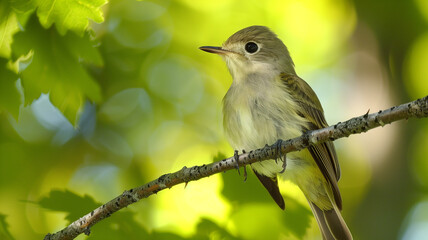
Distribution
The Acadian Flycatcher is a bird found in North America, primarily residing in the eastern and southeastern regions of the United States.
Breeding Range:
- Eastern United States, from New York and Pennsylvania southward to Florida and Texas.
- The highest densities are in Ohio, Kentucky, and West Virginia. They have many mature deciduous forests.
Wintering Range:
- Migrates to Central and South America for the winter.
- Found in countries such as Panama, Colombia, and Venezuela.
- Prefers lowland tropical forests during migration and winter months.
Habitat
Acadian Flycatchers thrive in mature, undisturbed forests with dense undergrowth. Not possible to remove the adverb.
- Deciduous forests
- Bottomland hardwood forests
- Swampy woodlands
- Riparian corridors (near streams and rivers)
These birds prefer forests with a thick, shady canopy and plenty of insects. Clean, flowing water often indicates good Acadian Flycatcher habitat.
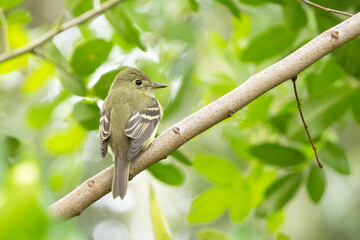
Diet
Like other flycatchers, the Acadian Flycatcher primarily feeds on insects.
Flying Insects – This includes mosquitoes, flies, moths, and beetles.
Spiders – They often catch these from leaves or tree bark.
Small Invertebrates – Occasionally, they will consume caterpillars and other soft-bodied creatures.
Berries and seeds make up a minor part of their diet, mainly eaten during migration when insects are less available.
They are adept aerial hunters, darting from perches to catch insects mid-air with impressive accuracy.
Behavior
Acadian Flycatchers exhibit fascinating behaviors that set them apart from other small songbirds:
- Solitary Nature – They prefer to live alone or in loose territories, especially during breeding season.
- Vocalization – Their sharp “peet-sah” call helps identify them among other flycatchers.
- Territorial Defense – Males defend their nesting sites aggressively, chasing away intruders.
- Perch-and–Dart Hunting: They scan for prey from a high perch. Then, they dive to catch insects.
- Migration Patterns – They migrate long distances to South America. Their survival depends on both American ecosystems.
Lifespan
The Acadian Flycatcher usually lives 5 to 7 years in the wild. However, some may live longer if conditions are just right. Predation, environmental changes, and food availability affect their lifespan.
Reproduction and Lifecycle
These birds have a well-defined breeding process that starts in late spring and extends into summer.
Breeding Season – Occurs from May to July, with a peak in June.
Nest Construction – The female constructs a delicate, cup-shaped nest using grass, bark, and spider silk, typically situated on a horizontal tree branch.
Eggs – They lay between 2 to 4 eggs, which are creamy white and speckled.
Incubation Period – This lasts for 13 to 15 days, during which the female incubates the eggs by herself.
Fledging – Chicks leave the nest 12 to 15 days after hatching and rely on their parents for a brief period afterward.
In contrast to many small birds, Acadian Flycatchers show remarkable loyalty to their nests, often returning to the same nesting site year after year.
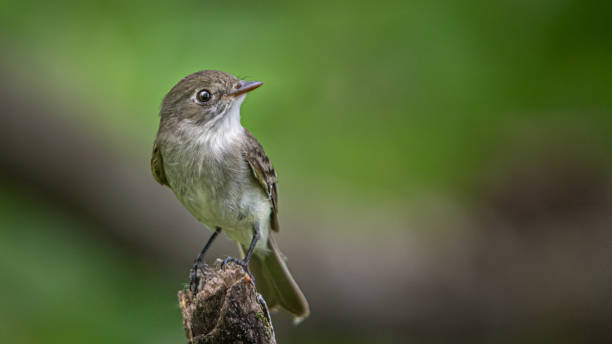
Predators
While small and agile, Acadian Flycatchers are still vulnerable to several predators:
- Hawks and owls occasionally hunt birds of prey.
- Snakes – Black rat snakes and other tree-climbing snakes prey on eggs and nestlings.
- Mammals – Raccoons and squirrels sometimes raid nests for eggs.
- Domestic and feral cats are a major threat. This is especially true near human settlements.
Adaptations
The Acadian Flycatcher has evolved adaptations that help it thrive in its environment.
Keen Eyesight – Essential for spotting and catching fast-moving insects in mid-air.
Cryptic Plumage – Its olive-green and brown tones blend with the foliage. This makes it hard for predators to spot.
Vocal Communication – Distinctive calls help mates and rivals recognize each other from afar.
Long Migration Capability – They can migrate thousands of miles. Strong flight muscles and efficient energy use enable this.
Conservation Status
The IUCN categorizes the Acadian Flycatcher as Least Concern. Nevertheless, they encounter several challenges:
Threats:
Habitat Loss – Deforestation across the Americas endangers their breeding and wintering habitats.
Climate Change – Affects migration patterns and the availability of food sources.
Nest Parasitism – Brown-headed cowbirds lay their eggs in the nests of Acadian Flycatchers, which diminishes the Flycatchers’ chances of successful reproduction.
Collisions with Structures – Windows and communication towers present dangers, particularly during migration.
Conservation Efforts:
Safeguarding mature forests through the establishment of national parks and wildlife reserves.
Initiatives for habitat restoration aimed at enhancing suitable breeding environments.
Designing bird-friendly buildings to minimize collision risks.
Conclusion
The Acadian Flycatcher is a remarkable bird. It helps forests by controlling insect populations. Though small, they migrate long distances, hunt well, and balance their habitats. To protect these birds, we must preserve their forest homes. This will ensure that future generations can admire them in North America’s woodlands.
